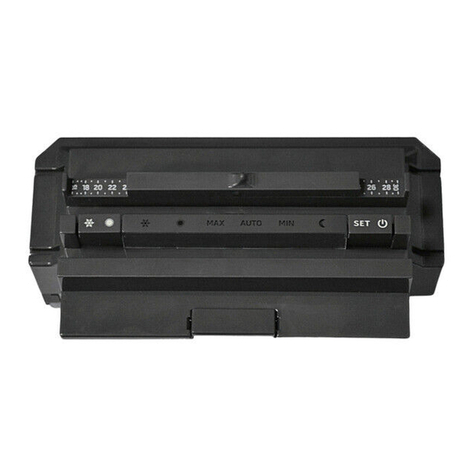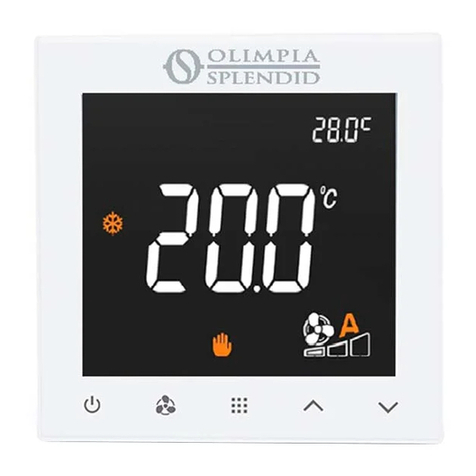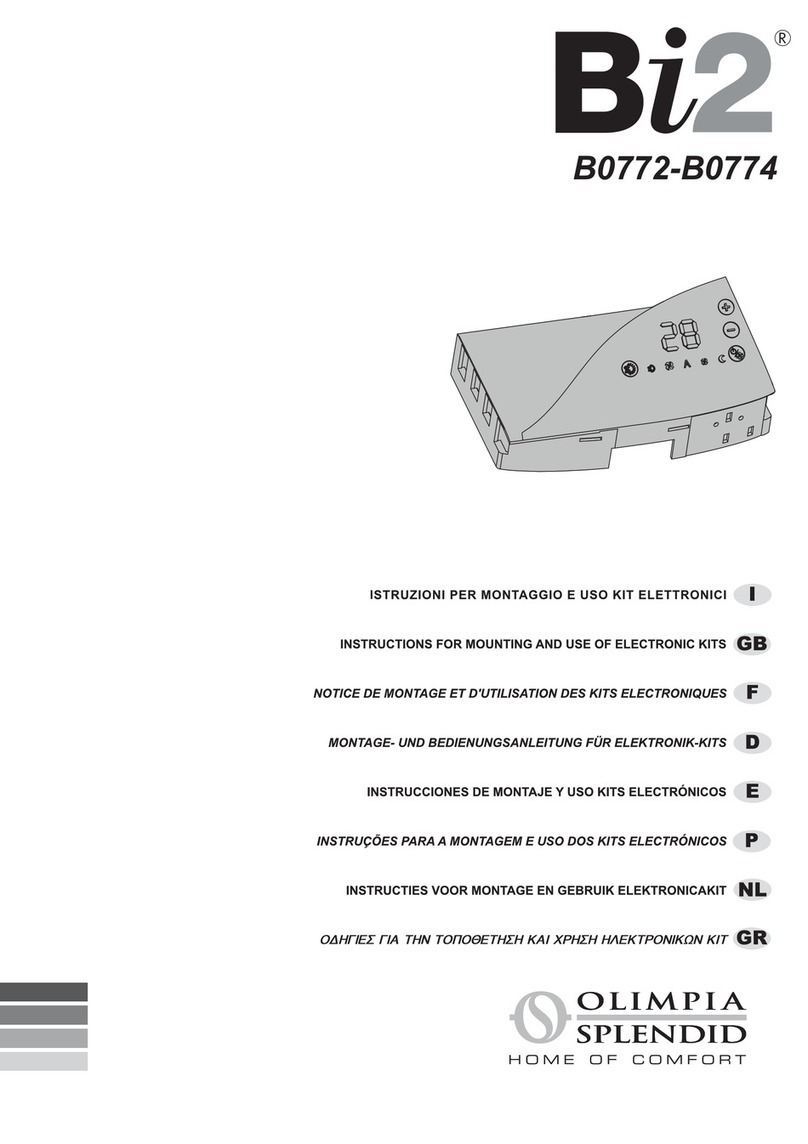
10
Programming the Control
Here’s how to connect your six time periods with the three
comfort ranges – home, away and sleep, CDU Mode Settings
ON/OFF and Frequency Reduction mode settings ON/OFF.
Open the door.1.
Press the days (2. ) button at the bottom of the
thermostat. You will see 1 to 7 ashing on the display.
Select one of the options (1 to 7 , 1 to 5 , 6 to 7 or3.
individual day : 1, 2, 3, 4, 5, 6, 7) by pressing the days
( ) button until you get your desired option. Select
1 to 7 if your individual day schedules are same.
When you have selected one of the options (1 to 7, 14.
to 5, 6 to 7 or individual day: 1, 2, 3, 4, 5, 6, 7), press the
period ( ) button at the bottom of the thermostat.
P1 will ash on the display.
To change the hours in P1, press the start time (5. )
button at the bottom of the screen.
You will see the hours in 6:00 AM ashing on the6.
screen. Press the up or down button and stop on the
desired time.
To change the minutes, press start time (7. ) button.
You will see the minutes in 6:00 AM ashing on the
screen. Press the up or down button and stop on the
desired time.
The“stop time”for period 1 (P1) is also the“start time”8.
for period 2 (P2). To change the stop time for P1 –
which means you are also changing the start time for
P2 – use the instructions in the next step to change
the start time for period 2.
Press the Touch ‘N’ Go button – home (9. ), away
( ) or sleep ( ) – you want to use during
period 1 (P1) from the row of buttons just below the
display. You will see triangle icon ( ) above the
button selected. This tells the thermostat whether you
are home, away, or sleep during P1. The thermostat
will use the heating and cooling temperature settings
you’ve selected for that Touch ‘N’ Go button. For
example, if your heating temperature setting for
home is 23 °C, the thermostat will keep the heat at 23
during P1.
Press the zone (10. ) button on the left side of the
display.
If the previous CDU Mode status is ON ,the ot
(
) icon will appear on the display,
represents CDU mode is“OFF”,
If the previous CDU Mode status is OFF, thet
o (
) symbol will disappear from the
screen which represents CDU mode is ON
now.
Press the hold (11. ) button on the left side of the
display.
If the previous Frequency Reduction Modet
status is ON ,the ( ) icon will disappear from
English






























